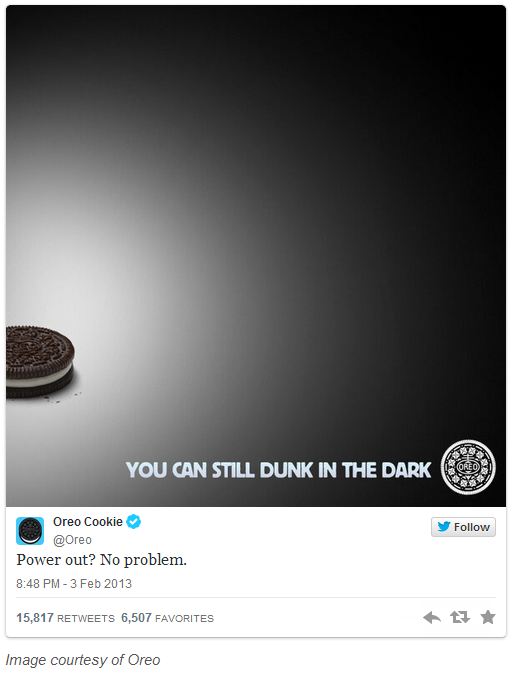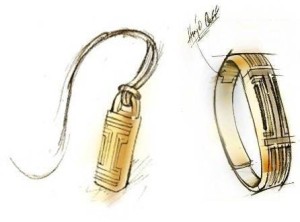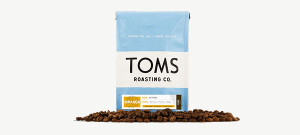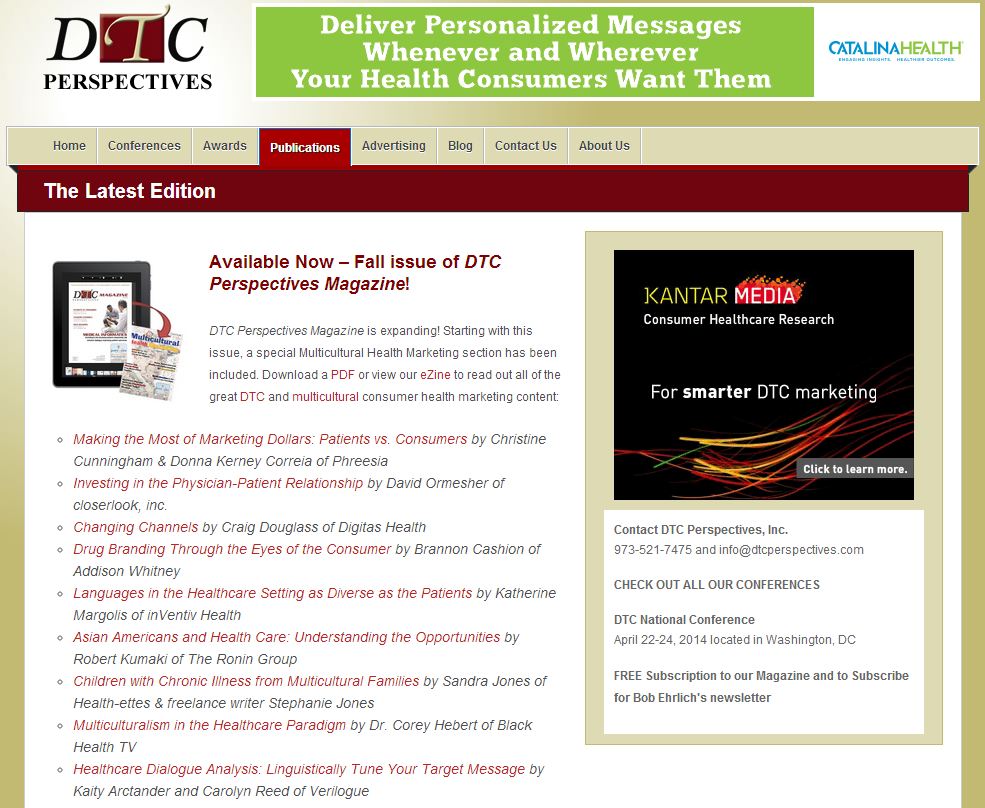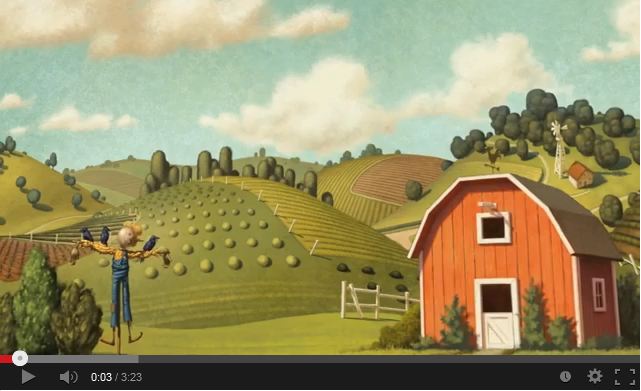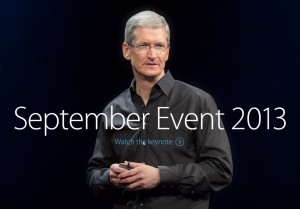Real-Time Marketing: Making It Work For Pharma Branders
Real-Time Marketing: Making It Work For Pharma Branders
Let’s start by creating a baseline for this topic. What is real-time marketing (RTM)? Of all the attempts to define this marketing strategy, a blog post from Evergage sums it up quite nicely: RTM is “…the practice of brands engaging their audience via content, advertising, and product placement that is relevant to a specific current event or cultural happening. The content is most often in the form of a “meme” or graphic advertisement shared through social media channels.”
An easy example? Oreo’s infamous tweet during last year’s Super Bowl.
When we start to look at RTM (sometimes referred to as viral marketing) through a healthcare lens, we need to dig a bit deeper. Pharmaceutical branding is inherently complicated. The industry is overflowing with rules, regulations and guidance – all of which make marketing a bit challenging. And because of these parameters, real-time marketing, as explained by Evergage, seems somewhat elusive.
But, it really is all about perspective. Mashable frames it up a bit differently.
“…real-time marketing success starts with a brand's day-to-day activity, not a single well-timed moment. Don't swing for the fences your very first time out. Implement small, real-time marketing initiatives on a regular basis; patiently teach your audience they can expect timely, relevant communications from your brand. Then, when a really big opportunity arises, your team is poised and ready to make the most of it.”
When considering in Mashable’s frame of reference, RTM and pharmaceutical branding seem to better coexist. This tactic becomes less about a cute response and more about being responsive – and proactively so. Pharmaceutical companies face an unfathomable number of questions from a variety of audiences – and comprehensive, strategic marketing efforts can go a long way to answering a lot of them before they’re even asked.
Pharma branders can utilize RTM by identifying opportunities that work within the confines of their industry – and by viewing those parameters as guideposts, rather than obstacles. A program like TEDMED is a great example of such an opportunity TEDMED brings together like-minded industry professionals and gives them a variety of platforms to promote their brands. Brands can use all of the tools of RTM to tell their story while they attend (or even just live stream) this kind of conference.
And, in order to succeed at RTM, you have to get comfortable with learning as you go along. The fundamental tactics of this type of strategy are content, social channels, mobile and video. Can’t focus on all four areas? Then specialize in one and grow from them. But, the key to real-time marketing is responsiveness – build a program around that and you’re more than on your way to a successful campaign.
# # #
Sources
“Real-Time Marketing Isn’t What You Think It Is,” Evergage.
“Someone Give This Oreo Employee A Raise,” Mashable, Feb. 3, 2013.
“4 Steps to Explosive Real-Time Marketing,” Mashable, July 15, 2013.
“Real-Time Marketing Opportunities in Healthcare?,” brandgagement, May 7, 2013.
“2014: The Year of Digital Pharma?,” Pharmaceutical Executive, Jan. 23, 2014.
Fitbit, meet Tory Burch. Tory Burch, meet Fitbit…?
Fitbit, meet Tory Burch.
Tory Burch, meet Fitbit…?
More and more, companies are partnering to bring products and services to consumers that cross socioeconomic, demographic and psychographic lines. Sometimes, bringing two companies together not only reaches a larger audience, but it exponentially builds their brands. Think Apple and Nike, Eddie Bauer and Ford, The Global Fund (Red) and GAP (along with other brands, including Apple, Hallmark, Converse and Dell) and Isaac Mizrahi and Target.
Earlier this year, and on a more unconventional note, Fitbit and Tory Burch announced a partnership: The Tory Burch for Fitbit accessories collection.
In one hand, you have Fitbit, a pioneering maker of health and fitness tracking gear. The NPD Group now says Fitbit has 77 percent of the market for full-body activity trackers despite intense competition from Jawbone, Nike’s Fuelband, and others.
In the other, there’s Tory Burch, an American lifestyle brand with more than 100 freestanding boutiques and a presence in more than 1,000 department and specialty stores. The collection, known for color, print and eclectic details, includes ready-to-wear, shoes, handbags, accessories and beauty.
In this fashion meets fitness venture, Tory Burch has designed pendants, bracelets and wristbands that will hold the Fitbit Flex tracker (see images below).
The skinny? Well, the Fitbit Flex retails for $100, but Tory’s jewelry ranges from $50 to $595. And, one of the brand elements that seems to resonate with Fitbit products is their wearability and durability, which seems a little bit at odds with Tory’s classics.
The real question here is, will existing Flex owners buy into the accessory options from Tory Birch, or just stick with the basic plastic bands?
And, on the flipside of this thinking, could Fitbit welcome an entirely new, more affluent audience through this partnership? After all, the pendant and bracelet options are much more attractive for going out.
Either way, I can’t wait to see the finished products (hopefully in silver, too!), and once it launches, watch this unique partnership grow.
# # #
Sources
“Twenty Co-Branding Examples,” Businessweek.com, https://goo.gl/S6Uoy
“How Fitbit Survived as a Hardware Startup,” Forbes.com, https://goo.gl/NbSNpf
“Buzz,” Fitbit.com, https://goo.gl/YGcM8n
“About the Company,” ToryBurch.com, https://goo.gl/SGcIkr
And...we're BACK!
And...we're BACK!
Hey Branders! We’ve been on a bit of a facelift hiatus since the end of last year. In conjunction with the launch of our new website, we also did a reskin our brandsalsa blog.
Everything here is a bit more visually-oriented, and overall, a better reflection of Addison Whitney’s brand. Now, we’ll be back posting updates on a more regular basis, and we’ll also share videos, news and/or trends that catch our eye. So, if you see something that makes an impact on you, feel free to share it with us via [email protected].
Happy Branding!
TOMS Launches Marketplace, Roasting Co.; Continues To Build on Social Good Promise
TOMS Launches Marketplace, Roasting Co.; Continues To Build on Social Good Promise
10 million pairs of shoes to children in need.
150,000 people have had their sight restored.
And now?
One of TOMS’ latest ventures, Marketplace, brings 30 socially conscious brands together via a platform to help them succeed. Committed to give back to their communities, each brand is working to make a difference to use business to improve people’s lives. With over hundreds of items to choose from, TOMS offers its community the innovative opportunity to shop by cause or even the region they wish to help.
But that wasn’t enough… Earlier this month, the company launched TOMS Roasting Co. Remaining committed to its One for One® mantra and in partnership with Water for People, for every bag of coffee TOMS sells, a person in need will receive a week of clean water. Let that sink in for a second… An estimated 1.8 billion people are drinking unsafe water. When you buy a $12.99 bag of coffee, someone will get something we take for granted every.single.day.
It’s remarkable, really, to see a company able to thrive by making an impact on communities worldwide. Not only thrive, but build a brand for itself that other companies strive to emulate. With so much focus on shopping local and doing good, this is a branding trend I’m happy to follow, and personally, I can’t wait to see what TOMS comes up with next.
# # #
Source
“One for One,” TOMS.com, https://www.toms.com/our-movement/l
Hot off the Press: Addison Whitney Feature in DTC Perspectives Magazine
Our global president, Brannon Cashion, wrote an article about pharma branding through the eyes of the consumer for DTC Perspectives Magazine’s Fall 2013 issue. Check it out: https://goo.gl/bsoh8g!
Brand Genius: Jack Dorsey
I was in a Bank of America a week ago and came across Fortune magazine’s 40 under 40 issue. I began flipping through the pages and stumbled across Jack Dorsey; I recognized the name, but only as the co-founder of Twitter. What I learned reading the article, and doing more research on Dorsey for this post, far surpassed my initial impression (he started Square, too?!?!).
So, similar to our “Brands We Love” posts, we’ve talked internally about focusing on key influencers and brand leaders who are making waves in our industry. Dorsey will be our first post profiling such an individual.
There is something innately fascinating about someone like Jack Dorsey – a college dropout who soaks up information like his life depends on it. Someone inherently curious, who has built a life for himself that revolves around invention, innovation and seeing the world as something to evolve, to make better. Learning about him, you find yourself a little envious, but then realize that he has harnessed what he excels at and shared it with the world. It’s remarkable.
A St. Louis native, Jack Dorsey had an affinity for studying maps and spending time in railway yards as a kid. He taught himself basic computer programming and by the time he was a teenager, he had developed a program that graphically simulated the movements of the vehicles on a police scanner.
He studied at the University of Missouri, but a job took him to New York where he enrolled and eventually dropped out of NYU. He bounced around – working at (and leaving or being fired from) two different start-ups and eventually ended up back in St. Louis feeling like a failure. But, his time home allowed him to study varied interests, from botanical illustration to massage therapy.
In 2005, San Francisco became the impetus for Dorsey’s creativity. Through a job at Odeo, a directory and search website for syndicated audio and video, Dorsey was able to partner with colleagues to brainstorm new computer programs. Odeo’s popular “hackathons” which allowed its programmers to work on anything they wanted, eventually gave way to the development of Twitter. A poster on the Y Combinator blog once commented that Twitter was “more of a discovery than an invention” and because of that reality, its precise origins are convoluted. That said, Dorsey was instrumental in its creation and success, along with a team of highly intelligent programmers and developers.
The fledgling Twitter needed to build buzz and awareness, so Dorsey and company used the South by Southwest festival to do just that. Twitter named six attendees who were enthusiastic tweets its “ambassadors,” and posted their messages on plasma screens in the lobby of the conference center. The stunt was insanely successful and paved the way for continued growth.
The beauty of Twitter is how much its basic interface lends itself to all sorts of purposes – uses unforeseen by Dorsey and its designers. And, every step of the way, Twitter has embraced its own evolutions, including retweeting, the @-reply and hastags.
“I believe fundamentally that the next Gloria Steinem, the next Ghandi, the next Martin Luther King – they’re out there and they’re actually using Twitter today. And our job is to insure that people find them.” -Jack Dorsey
Twitter’s beginnings were bumpy, and the management structure was innately flawed. Eventually, Dorsey left the company (he still retains the chairman title, but it’s somewhat ceremonial in nature) and began searching for a new problem to solve.
Genius struck when Jim McKelvey, a longtime friend of Dorsey’s, complained that he failed to sell a piece of glasswork to an overseas buyer because of credit card payment issues. Dorsey began to think of money as “commerce, which is conversation.” Together, they assembled a team; Dorsey focused on the software and McKelvey, the hardware. Soon, they had a prototype and were approaching investors…and Square was born.
Just four years after Square’s technology breakthrough (using the iPhone’s audio jack, rather than its patented dock connector to attach to phones), the company has been valued at $3.25 billion and IPO rumors are swirling. Dorsey has been able to shape Square into a company that he’s proud of, and one that is profiting off of his experience.
At 36, Jack Dorsey is strategically building his personal brand on a colorful Twitter and Square foundation. He’s thoughtful, deliberate and open-minded. He continues to act unconventionally – at a recent talk at Y Combinator’s annual startup school, Dorsey read from some of his favorite books and played music for the audience. And, in some ways, he’s a bit of an enigma – mentioning a possible run for mayor of New York and also enjoys riding the bus to work to be able to observe people’s interactions with technology and apps (via phones, tablets, etc.).
With so many accomplishments already in his repertoire, Dorsey still has immense potential ahead of him and it will be interesting to see is brand develop further with each new venture. Stay tuned, branding nerds!
# # #
Sources
“Jack Dorsey: The pride of St. Louis,” Fortune magazine, https://goo.gl/CGPVOS
“Jack Dorsey holds impromptu art and lifestyle symposium,” CNET.com, https://goo.gl/CUwWvI
“Two-Hit Wonder,” The New Yorker, https://goo.gl/5qB7qd
“20 Things About Jack Dorsey,” All Things D, https://goo.gl/fAUG8
“The Many Sides of Jack Dorsey,” WIRED, https://goo.gl/4vY6E
Chipotle: Cultivating a Better World
Back in June, I wrote about my undying love of Chipotle and its brand.
I wrote about the company’s original short film, released in 2011 and entitled, “Back to the Start.” The film, by film-maker Johnny Kelly, depicts the life of a farmer as he slowly turns his family farm into an industrial animal factory before seeing the errors of his ways and opting for a more sustainable future. Both the film and the soundtrack were commissioned by Chipotle to emphasize the importance of developing a sustainable food system. The video reached more than four million views on YouTube when it aired during the 2012 Grammy Awards (in its entirety, 2 minutes and 20 seconds). At present, the video has a whopping 7.8 million views.
Fast-forward two years and so many months later to “The Scarecrow.”
I came across this new short film when it launched last Thursday, Sept. 11 and was in absolute awe. From the hauntingly beautiful Fiona Apple singing a childhood favorite, “Pure Imagination,” to the amazingly profound storytelling, I was hooked. Only Chipotle could weave a story that seems so simple, but is, in turn, a profound critique of our food industry. See for yourself.
Oh, and did I mention it’s based around marketing for a game? In collaboration with Academy Award-winning Moonbot Studios, “The Scarecrow” is an app-based, arcade-style adventure game that depicts a scarecrow’s journey to bring wholesome food back to the people by providing an alternative to the processed food that dominates his world (click here for a behind-the-scenes look). Here’s the official game description off its website.
The Scarecrow needs your help to foil the evil plans of Crow Foods and break the crows’ monopoly on food production and supply in the city of Plenty. Tilt your device to navigate through each level, outsmart the Crowbots, unlock extras, and restore hope for animals, farms, and the environment, while providing the citizens of Plenty a healthy and delicious alternative.
The buzz from Chipotle’s latest marketing coup is substantial. A simple Google News search for Chipotle and scarecrow returned more than 6,000 results. Every element has been meticulously thought through:
- Download Fiona Apple's cover of “Pure Imagination” from iTunes and proceeds ($.60 per download) go to the Chipotle Cultivate Foundation, which provides funding to support sustainable agriculture, family farming, and culinary education.
- Earn at least three stars on every level of the game and score a BOGO card for a Chipotle burrito, bowl, salad or order of tacos (while supplies last, sure, but who doesn’t love free food?).
And, all of the copy surrounding this campaign is clear and concise – case in point:
“The Scarecrow” is another chapter in our commitment to Food With Integrity, and represents what we aspire to accomplish through this mission. Our goal for “The Scarecrow” is to bring awareness of important issues to a broader audience, and we hope it entertains you as much as it makes you think.
Smart. Thought-provoking. Inspirational.
To leverage even more success, I’m curious to see if it runs during the Emmy Awards broadcast this weekend. It may have already netted more than 4.8 million YouTube views, but a primetime audience could mean a repeat of its initial “Back to the Start” success (and then some, especially considering the buzz is so big already). I’ll definitely keep an eye out.
So, how does this kind of campaign define Chipotle’s brand and tell its story? From a bigger branding picture, why does it matter? It’s rare for a large company to be so self-aware and smart that it builds a brand where it doesn’t have to blatantly use its own name in marketing and advertising. Chipotle relies on the wholesomeness of its food and emphasizes the importance of its cause to tell its overall brand story. From a bigger branding perspective, Chipotle’s success means more and more companies may need to figure out how to use similar tactics to build their own brands – and, for new companies, it’s a great example of the importance of working hard to do things right.
# # #
Sources
“The Scarecrow,” ScarecrowGame.com, https://goo.gl/dTwNGV.
“The Scarecrow – Chipotle Mexican Grill.” MoonbotStudios.com, https://goo.gl/cOUhkK.
An Apple a Day...
So, it's no secret that we're fans of Apple at Addison Whitney, and today's keynote was no exception. There is something so intoxicating about the buzz surrounding these events, and we were very excited to see the latest news unfold.
Today's keynote had several announcements, but here are the highlights.
First up, two new iPhones (to completely replace the iPhone 5).
But, as impressive as the new products seem to be, I think we were most excited to learn when Apple's gorgeous new operating system, iOS 7 would be released to the public. Drum roll, please... next Wednesday, September 18!
In case you missed the keynote, feel free to watch it below.
What do you think about the new phones? And, their naming extensions (5C and 5S)? What do you think this means for Apple's brand moving forward/what impact do you think it has? We'd love to hear your thoughts!
Destination Branding: A Look at National and Regional Brands
Today, we’re concluding a multi-week look at destination branding. So far, we’ve looked at city, state and country branding. This post will round out our series by focusing on national and regional brands. Since we’ve been covering destinations where we have offices, today’s focus will be on the U.S., Europe and Asia (and the Asia Pacific region).
First, a quick recap on the impact of tourism: Last year, more than one billion tourists travelled the world and five to six billion more were expected to have travelled within their own countries. With stats like that, a successful tourism brand could mean millions (or even billions) of dollars for a destination.
America’s destination brand is run by the Corporation for Travel Promotion (formed in 2010), which does business as Brand USA. Brand USA was established by the Travel Promotion Act to spearhead the nation's first global marketing effort to promote the U.S. as a premier travel destination and to communicate entry/exit policies and procedures to worldwide travelers.
Personally, I was surprised to learn the U.S.’s official travel/tourism entity was so young; I assumed it had been around much longer than just three years. That said, a lot has been done to round out America’s travel brand. The destination’s mantra, Discover America, is succinct, but still tugs at the hearts of travelers.
The logo feels seems to allude to points on a map and the destination uses a variety of colors when it comes to execution. A few examples are below.
It has to be daunting to try to encompass an entire country in terms of destination branding; there are so many landmarks and events to consider. But, the site for U.S. tourism does a decent job of spotlighting different activities while also keeping the overall navigation simple. It would be easy to over-complicate or clutter a site like this, but it’s clean and easy to explore.
Established in 1948, the European Travel Commission (ETC) is responsible for the promotion of Europe as a tourist destination. The organization is comprised of 33 countries’ NTOs (National Tourism Organizations) and focuses on PR, advertising and trade promotion.
The logo for Europe feels whimsical and unlimited. The wing-like effect makes me think of an adventure taking flight, and even though that might feel a bit cheesy, with all you can see and experience in Europe, it feels right. Two different executions are below.
In addition to the logos above, there is an additional treatment of the word Europe used on the site, paired with a tagline-esque call to action (see below).
The website does its best to pack in as much information about the region as possible, while maintaining a simple navigation with a lot of different pathways to planning a vacation. That said, I would have loved to see more photography from each country’s famous landmarks and events.
Asia Pacific
The Asia Pacific region (or just Asia, for that matter) doesn’t seem to have any sort of overarching tourism entity. There are several different organizations that represent various aspects of tourism to the region, and we’ll briefly look at each below.
Pacific Asia Tourism is the first thing that comes up when you do a Google search for “Asia tourism,” but it’s an independent research, consultancy and education/training organization focused on the capacity of sustainable tourism in the region.
The Responsible Tourism Initiative also comes up in a Google search. This initiative focuses solely on Asian tourism operators, so it serves as more of a trade organization than something consumer-facing.
Along those same lines is the Pacific Asia Travel Association: another trade organization where I hoped to find a consumer site focused on tourism in Asia. Instead, it’s built by and for travel professionals in the region and doesn’t really speak to potential visitors.
Finally, I stumbled across this site, titled “Asian Tourism.” This site doesn’t seem to have any affiliation with an organization or tourism entity, but it does offer information on the various countries in the region.
So, after a lot of Google-ing, if I were planning a trip to the Asia Pacific region, I’d research sites like TripAdvisor, Fodors, Frommers and AAA for the best/most reliable information.
So, this concludes our series on destination branding. If you want to review any of the previous posts on destination branding, here are the links: city branding- part one, part two; state and country branding- part one and part two. Now go pack your suitcase and discover your wanderlust!
# # #
Disclaimer: This post is purely subjective. My background is in brand strategy (positioning, messaging and portfolio organization), not design. Good visual branding can be challenging to achieve, and I whole-heartedly respect designers at Addison Whitney and beyond.
Source
“UNWTO: Annual Report, 2012.” UNWTO.org, https://goo.gl/pp5a7g
“About Brand USA.” TheBrandUSA.com, https://goo.gl/tmsyNZ
“About ETC.” ETC-corporate.org, https://goo.gl/i22c
Destination Branding: A Look at States and Countries around the World (Part Two)
Last year, more than one billion tourists travelled the world and five to six billion more were expected to have travelled within their own countries. With stats like that, a successful tourism brand could mean millions (or even billions) of dollars for a destination.
On Tuesday, we continued our series on destination branding by looking at states and countries (specifically, North Carolina, Germany and New York). Today, we’ll cover the rest of the states and countries where we have offices…
Part Two: California, Washington and Japan
California is the third largest state by area, so you can imagine how much work goes into branding it as a travel destination. When searching for the tourism entity’s logo, I found two versions – the one being used on the website now and one from a few years back. The difference lies in the font treatment, where the current logo is more cartoon-y than the old.
Here’s the current logo:
And here’s one from a few years back:
Given the immense amount of information the website needs to cover, I think Visit California has done a good job of simplifying vacation options for potential visitors. And, it’s presented in a way that keeps it interesting and on-brand.
Washington seems to have had a somewhat tumultuous past when it comes to its tourism organizations. In February 2011, the Washington Tourism Alliance (WTA) was created following the announcement of the closure of the state tourism office. The WTA immediately worked to protect and preserve a number of ongoing state tourism programs and valuable marketing assets of great importance to the industry. In addition, the WTA began to create a long-term strategy for funding, development and marketing of a new, industry driven state destination tourism initiative.
Washington’s tourism logo emphasizes the natural resources of the state in much of the same way that North Carolina’s new logo does. What confused me a bit was the inclusion of “The State” under Washington. I’m sure there’s some initial confusion regarding whether someone is talking about Washington state or D.C., but I’m not sure tacking on “The State” to the logo is necessary.
And, since the website does such a beautiful job of highlighting what makes Washington a great place to visit, I feel “The State” is even less necessary.
Last up is Japan. Since 1964, the Japan National Tourism Organization (JNTO) has led a broad range of activities promoting travel to Japan through various activities overseas as well as tourism-promoting activities in the country itself. Interestingly enough, the country’s travel brand has two different identities: one for the NTO and another, more consumer-friendly tourism brand.
That said, the website follows a different approach. The landing page for Japan’s travel site features both logos, although neither is featured prominently.
Once I chose English, I found that the new site didn’t feature the consumer-friendly Japan travel logo at all, which I found a little strange. I feel like the “Endless Discovery” logo tells an intriguing story and could be used as a showpiece for Japan’s travel site.
So, that concludes our look at state and country branding. In two weeks, we’ll finish up this series by diving into how the U.S., Europe and Asia Pacific regions handle tourism branding. Stay tuned!
# # #
Disclaimer: This post is purely subjective. My background is in brand strategy (positioning, messaging and portfolio organization), not design. Good visual branding can be challenging to achieve, and I whole-heartedly respect designers at Addison Whitney and beyond.
Source
“UNWTO: Annual Report, 2012.” UNWTO.org, https://goo.gl/pp5a7g
“About WTA.” Washington Tourism Alliance, https://goo.gl/5GiRIn
“What is JNTO?” JNTO.org, https://goo.gl/o6J8NL

